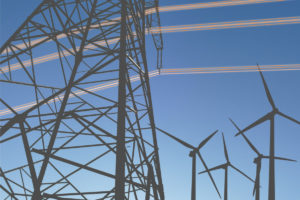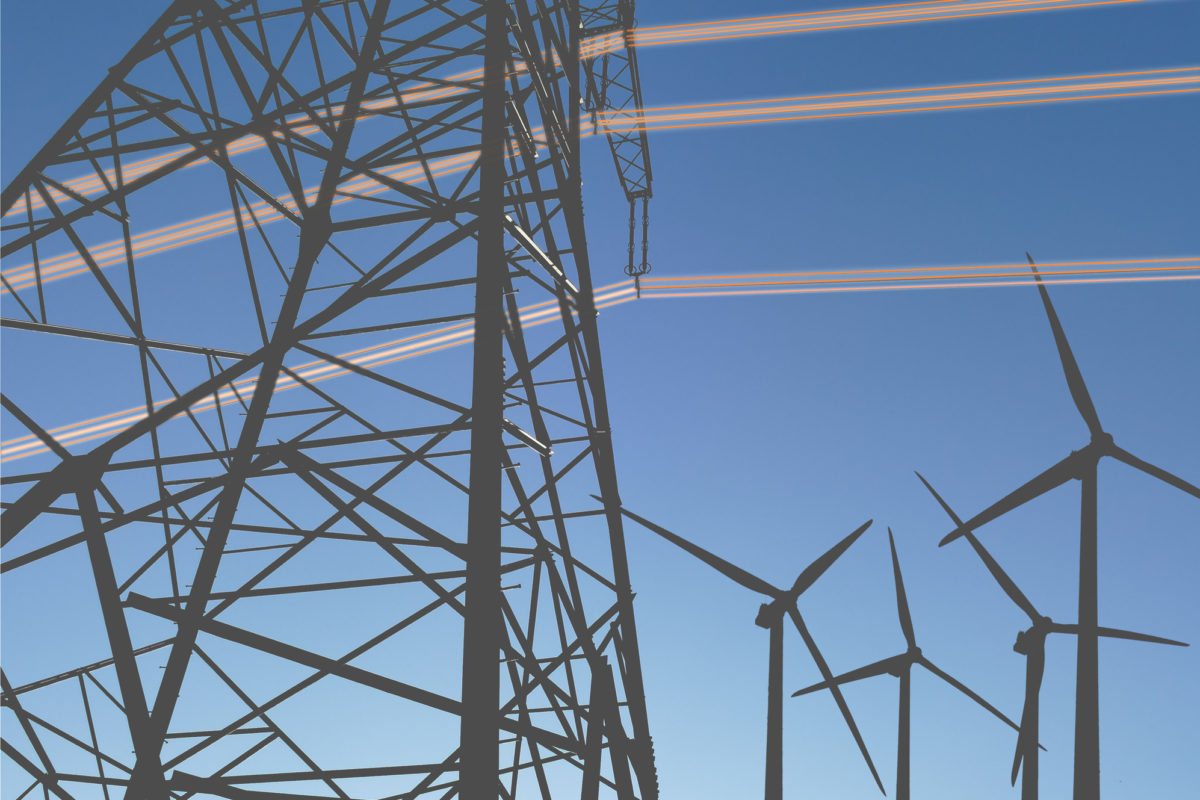
Windräder unter Strommast am blauen Himmel
Many wind turbines froze in Texas recently, leading to conflicting narratives on the role that wind power played in causing the crippling blackouts in our state.
Wind’s defenders point out that ERCOT, the Texas electric grid operator, expected to rely on wind to satisfy only 7% of the winter peak demand, and that natural gas plant outages were responsible for most of the shortfall.
Wind power’s critics argue that low expectations for its ability to produce power when it’s needed most reveal a major flaw, and that the Texas grid is unreliable due to overinvestment in wind.
So who’s right?
As long as expectations for wind’s contributions to reliability are accurate, it makes sense to judge wind relative to those expectations, even if they’re low. More importantly, the blackouts were a systemic failure of our whole energy infrastructure to cope with severe winter weather.
Instead of blaming any one generation source such as wind or natural gas, we must get serious about making investments to protect our energy infrastructure from a wide range of threats.
When utilities decide how much to invest in each generation resource (wind, natural gas, etc.), they consider two types of value that it can provide to the electricity system. First, the utility’s overall mix of resources needs to be reliable, so a resource that will be available with high confidence during times of maximum electricity demand has great value. Natural gas “peaking” plants, which are cheap to build but expensive to operate, have traditionally played this role.
Second, the utility wants to minimize its costs of supplying electricity (which allows for lower customer electric bills), so a resource that generates a lot of cheap power has considerable value. Although wind isn’t expected to contribute much to reliability because its output depends on weather, it has become a very cheap and clean electricity source.
Every generation resource has unique properties. Natural gas, for example, is expected to provide reliability, while other resources, such as wind turbines, are expected to supply cheap and clean power when they’re available. It is important to judge each resource relative to the type of value the utility expected to obtain from that resource when the utility made the investment.
As an analogy, imagine that your home has rooftop solar panels and a backup diesel generator. You like your solar panels because they generally reduce your electric bills and make your electricity consumption cleaner. If the grid has a blackout, it’s nighttime and your backup generator breaks, it would be foolish to blame your solar panels for your lack of power — you never expected them to provide electricity at night. That’s not why you bought them.
In contrast, the entire value of your backup generator, which is expensive to run, is predicated on its ability to supply power during a rare blackout. The fact that it failed is a huge disappointment, since it didn’t provide the type of value you expected to receive when you paid a lot of money for it.
Each generation resource has unique pros and cons, but virtually all types of generation failed to cope with this most recent extreme cold in Texas. Wind turbines froze. Natural gas plants could not get fuel as gas wells froze, and outdoor equipment failed at coal, gas and nuclear plants.
Wind turbines are getting a bad rap, but there’s nothing inherently wrong with our mix of generation resources. All of these energy infrastructure components operate just fine in places with much colder winters than Texas has. Their utilities and energy companies take steps to cold-proof their assets, such as enclosing power plants, building wind turbines with de-icing systems, and using chemicals to prevent oil and gas wells from freezing.
We need to stop pointing fingers and instead consider specific investments to upgrade the resilience of Texas’ energy infrastructure, and whether the benefits outweigh the costs.
But as we do so, it is crucial that we look ahead. The actions we take now should protect Texas against other lurking threats like extreme summer heat, hurricanes, and cyberattacks as well.
Benjamin D. Leibowicz is an assistant professor of operations research and industrial engineering at The University of Texas at Austin.

